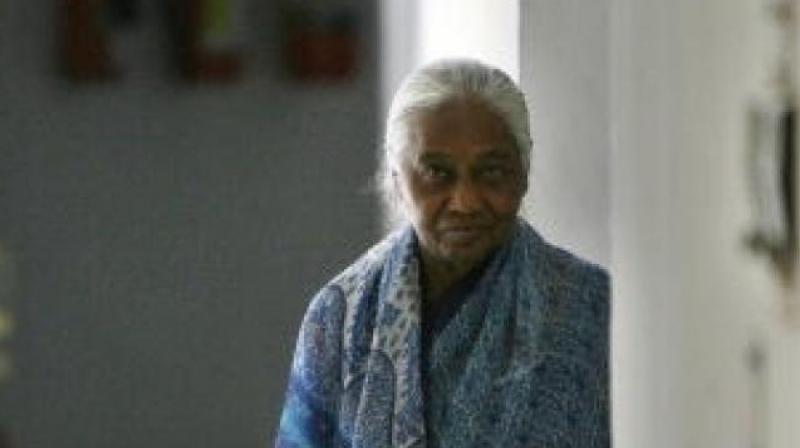70-plus old and lonely
The old age homes are not yet in place to meet the unprecedented needs of an ageing society.

The old is dead and the new is yet to grow and be accepted. The joint family system is on its way out. The old age homes are not yet in place to meet the unprecedented needs of an ageing society. The generations that came of age in the Eighties and Nineties are now caught in a dilemma. They are nostalgic about the past, but are helpless in reinventing or sustaining the joint family system. They need quality and affordable old age homes, but are reluctant to embrace them due to feelings of guilt arising out of their Oriental values. Herein lies the problem and its tragic consequences for the growing aged population and the army of reluctant and helpless care takers.
It is in the crush of cities that the problems of the aged come out in starker contrast to the old rural idyll in which joint families still try to care for the aged. Left alone for a major part of the day as the younger generation works longer hours, the aged find they are alone even in the midst of crowded cities. In urban settings where land and housing are scarce, therefore expensive, newer models should be evolved. For instance, a Dutch nursing home incentivises young university students with rent-free accommodation so that they could be “friendly neighbours” to aged residents. The system worked on a symbiosis between the aged and the young, both generations benefiting from being brought together like this.
The Netherlands, which prides itself as a welfare state that cares for its elderly, used to depend on reimbursing not-for-profits, but has now switched to encouraging citizens to play a larger role in civil society. The system of encouraging students to participate in care homes in return for tuition fees is part of this process of passing things on to individual responsibility instead of letting it become a ‘care market’. In India, a similar practice existed in some families, as against the nursing homes in the Dutch example. Elderly couples without children would offer a younger person, usually a relative from a poor family, educational expenses so that he or she could take care of them. It is a win-win solution.
How well this works as compared to some of the atrocities brought out in videos exposing cruelty towards the elderly should open our eyes towards finding people to fit into an ecosystem in which both generations benefit. It is a daunting situation and there is need for innovation. We need to revisit past solutions to suit the modern world and in the absence of joint families, civil society, with government support, should look at setting up shared homes for the elderly in relatively peaceful parts of towns where local residents could make them feel a part of “larger family”.
Things take an especially nasty turn when the aged persons fall sick or become bed-ridden. It disrupts the lives of working couples. Moreover, there is an acute shortage of trained paramedical nurses and caretakers. When it comes to geriatric healthcare, even top notch corporatised hospitals are not equipped to provide preventive, curative and rehabilitative services. If available, they are prohibitively expensive and beyond the reach of many middle class families. Here again, the financial services sector, especially health insurance, has been quite ineffective.
In India, the society is complex and in transition. Migration within the country, and increasingly to other countries, leaves behind the elderly people, especially those who are infirm and need care and assistance. Given the stigma attached to old age homes, even the few who can afford quality old age homes do not want to opt for them.
Abuse of elderly is more rampant than one imagines. According to HelpAge India, in 2014, half of India’s elderly surveyed experienced abuse and 77 per cent of them lived with their families. Shockingly, more than the paid helpers, it was the son, and his wife, who turned out to be the primary abusers. Though India is perceived to be a nation of young people, compared to their developed Western counterparts, within the country there has been a record growth in the population of senior citizens – those aged above 60 years. According to government statistics, the number jumped by 35.5 per cent, from 7.6 crore in 2001 to 10.3 crore in 2011. India’s population during this period grew by 17.7 per cent only. In a resource scarce, developing nation with 121-crore population, the rising number of aged persons poses a great challenge to both the government and its citizens.
With a host of issues competing for government’s attention and its scarce resources, the problems of ageing population cannot make it to the top of the welfare agenda. In fact, after 1991, citing financial constraints and non-viability, the government has been dismantling public funded social security systems like pension for many categories of its own employees. On the other hand, it doles out small sums to senior citizens belonging to disadvantaged sections. The government’s initiatives in setting up old age homes and providing free or affordable geriatric healthcare leaves much to be desired.
In 1999, the government came up with a National Policy on Older Persons (NPOP) which “envisages State support to ensure financial and food security, health care, shelter and other needs of older persons, equitable share in development, protection against abuse and exploitation, and availability of services to improve the quality of their lives.” The lofty intentions sound impressive on paper, while the grim reality is that people are often left to fend for themselves.
The true test of a humane, welfare-oriented state is one in which the citizens do not dread the horrors of old age and instead are assured of secure, comfortable, dignified and even a happy ending to a long life well-spent.
(The writer teaches journalism at a reputed Chennai college)

